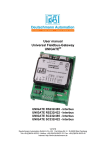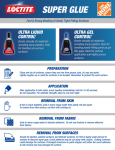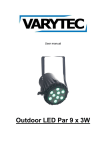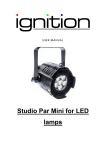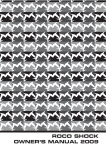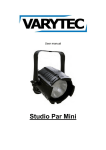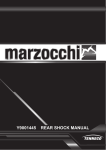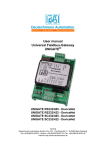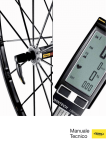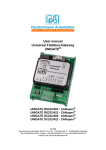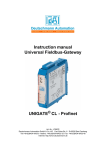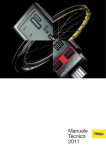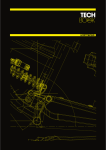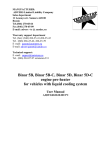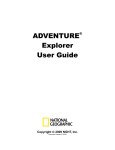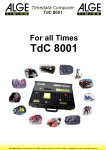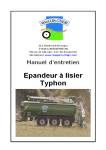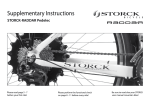Download User Manual - Storck Asia Pacific
Transcript
User Manual STORCK Rebel Carbon Composite Mountainbike Fork You have chosen an exclusive and individual product with our Rebel fork, which is made of a resin reinforced carbon fibre matrix, an aero space grade high end material. Independent tests proofed it’s fantastic longevity. Compatibility / Restrictions The Rebel fork is compatible with all customary Center Lock disc-brake-hubs and various IS2000 hubs. It’s not compatible with IS2000 system-wheelsets from Mavic and Easton. The fork’s disc brake mount meets the IS2000 norm. The Rebel fork is a strong and durable high tech product, which was produced to meet the highest and latest standards, with use of the latest manufacturing technologies. It was created to be used for touring and cross country mountainbiking. A compatibility-check, regarding assembly and use, particularly with regard to the fit of IS2000 disc hubs, should be made before assembling anything. We expressly recommend to ask a professional bicycle technician to mount the fork to your bike. Technical Features Rebel app. 590g 300 mm 456 mm 38 mm 185mm 26 x 2,25“ 100kg/ 220lbs Specification Weight (depending on steerer length) Steerer Length Construction Height Wake Maximum disc rotor size Max. recommended tire size Rider Weight Limit The fork should not be used after a crash or an accident and should be checked by a professional technician. Sent it in to the manufacturer if any doubt remains. Forks finish and top layer should not show any damages, like cuts, scores and deep scratches, which penetrated the paint and/or the top layer. Forks life-span is limited to 50000km and five years. It should be checked by the manufacturer after one of both points was reached. A detailed sight check should be made every 5000km. An eye should especially be kept on alloy inners and drop outs as on bondings. © Copyright by Storck Bicycle 2008 Feb./15./2008 Page 1 of 4 Warranty Storck warrants for two years from the day of purchase. Warning! Not following this manual could lead to a collapse of the fork and other parts. Collapse of a single part could enable the ride keeping control over his vehicle, which could lead to serious injuries and death! Storck is not responsible for products which were assembled unprofessional and/or untechnical. All Storck products should be assembled by professional bicycle technicians using proper tools. Assembling 1. First Steps € € € € Check sizes and meassures of fork and headset to make sure, that both fit. Check headset parts for flash and sharp edges. Remove those with sandpaper. Flashes and edges could cause a broken steerer through to a notch effect, which could lead to serious accidents. Check the stem for flash and sharp edges. Remove those with sandpaper. Use stems with slotclamps in the back only. Don’t use stems which fit by squeezing or pressing the steerer. Proof that your stem has an adequate approval for use on a carbon steerer. 2. Preparing the assembling € € € € € € € € € € Prevent scratching and do not roughen the fork steerer surface. Damaging the carbon top layer could lead to a collapse of the fork. Put a little grease on the alloy cone of the steerer before pressing on the lower headset race. Don’t do anything else with the steerer for now. Take care that you use a race in a fitting size. Use an adequate tool for pressing the crown race on the steerer cone while firmly holding the fork in one hand. Don’t rest the fork drop outs on a surface while doing this – this could damage the fork before use. If massive force is used for pressing the race on the cone, the fork could also be damaged before use. The diameter of the 1 1/8” fork’s cone: 30,05 •‚0,05mm. Take fork, headset-parts, spacers and stem and put them in the frame’s head tube to check how much of the fork’s steerer needs to be cut down. Mark it. Take care that there are max. 2mm space between the steerer and the top of the stem/cap Disassemble the parts again. Rebel forks can be cut to a minimal length of 120mm. We recommend to protect the saw area with adhesive tape. This prevents splice of carbon fibres. Use a fresh saw blade and a cutting jig. Take care that you don’t shorten the fork too much. File or grind down any sharp edges caused by sawing carfully. The fork is ready to be assembled now. © Copyright by Storck Bicycle 2008 Feb./15./2008 Page 2 of 4 3. Mounting of the fork € € € € € € € € € € € € You already shortened the fork and pressed the race on the crown. Assemble fork, headset, spacers and stem inside the frame’s headtube. Fit the provided clamp mechanism to the fork’s steerer. Adjust the bearing play with tightening the mechanism carefully. Don’t overtighten it – max. 6 Nm torque should be used. (A lot lower torque should be fine for neutralizing the play usually!) The stem should be tightened with it’s maximum recommended torque, but not with more than 8 Nm! A higher torque could cause damages and failures of parts, which could lead to serious accidents. Get the stem cap off and check if the steerer top ends 2 mm under the top end of the stem. Leave a spacer away or cut the fork a little more if necessary. Put in the stem cap again. Assemble the front brake strictly regarding it’s manufacturer’s guidelines. Mount the front wheel and check the guidelines of the hub and quick release manufacturer for advices how to do it properly. Mounting the wheels wrong or wrong handling of the quick release could lead to life-threatening and fatal accidents. Adjust the front brake regarding its manufacturer’s guidelines. Missing of proper assembling could lead life-threatening and fatal accidents. Check all assembly steps before using your bike again. A secure fit of front wheel, fork and stem should be checked before each ride by a twisting test. Security-relevant notes € € € Not more than 30mm spacers should be used between headset cap and stem. More spacers could cause an insecurity of the steerer, which could lead to life-threatening and fatal accidents. Usage of perfectly sized and fitting headsets and stems are allowed only. The nominal diameter of the steerer in the stem’s clamp area is 28,65 •ƒ0.05mm. Take care that a stems with adequate measures and clean inners and rims are used and the steerer has the right length (max. 2mm under the top rim). Sand down flash and sharp edges on the inside of a stem properly. Fatal and life-threatening accidents could occur through to flash and sharp edges. Fork’s integrated securing against accidental loss of the wheel should not be filed down in any case. Loose all screws before aligning fork and wheel. Information Every single fork is a unique handmade product. Carbon fibres are laid regarding an optimized layering plan into a negative mould. Alloy inners are integrated where necessary. Resin, pressure and heat create a monocoque. A supporting structure is created on the outside this way, just where it makes sense from the technical view. This allows combining an extremely low weight with ultra high stiffness and durability. Small tolerances in finish and appearance, like tiny air pockets or uneven fibre run, are caused by the handwork and don’t cause any quality or performance problems. Single forks are checked by assembling them for test reasons sometimes. Small marks on the surface, caused by this circumstance can’t be avoided. These marks don’t cause any quality leak too. © Copyright by Storck Bicycle 2008 Feb./15./2008 Page 3 of 4 Care Instructions Common lacquer caring products with or without silicon and water with a little rinsing agent are fine for cleaning the fork. Don’t rub aggressively and take care, that care products don’t stay to long on the surfaces. Any chemicals like thinners, alcohol, acetone, white gas should not be used for cleaning carbon products. We recommend using properly tested and approved bicycle clean and care products, recommended and stored by your bicycle dealer. Wir wünschen Ihnen viel Freude mit diesem technisch hochwertigen Produkt! Please contact your professional bicycle dealer or the local distributor (we show them on our website) for questions, especially regarding service and warranty. Storck Bicycle GmbH Carl-Zeiss-Str. 4 D-65520 Bad Camberg Germany www.storck-bicycle.de info@storck-bicycle.de Tel. +49-6434-9094-0 Fax +49-6434-9094-11 © Copyright by Storck Bicycle 2008 Feb./15./2008 Page 4 of 4




